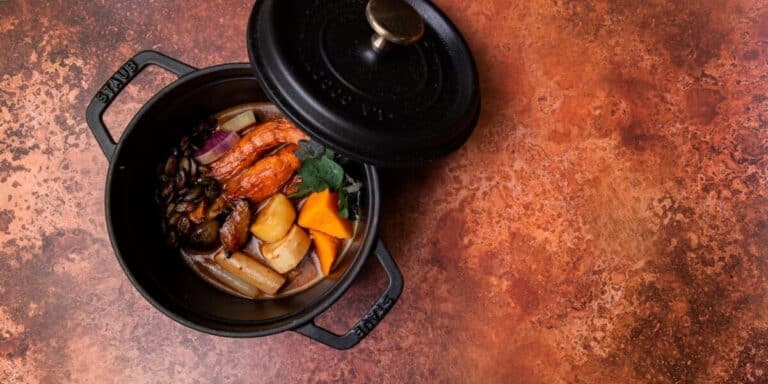Organizing Your Baking Sheet Storage and Decluttering
It’s often said that a cluttered kitchen is a sign of a cluttered mind, but is it really true that organizing your baking sheet storage can bring a sense of calm to your cooking routine? You’ve probably found yourself digging through a messy cabinet or drawer, searching for the right-sized baking sheet, only to end up frustrated and flustered. By taking control of your baking sheet storage, you can streamline your baking process and make the most of your kitchen space. But where do you start, and what’s the best way to keep your baking sheets organized?
Key Takeaways
• Purge and declutter baking sheets by sorting them into keep, donate or sell, and discard piles based on usage and condition.
• Measure the available storage space to determine the best storage method, considering the shape and size of baking sheets.
• Choose a storage solution that fits baking sheet dimensions and storage space constraints, such as baking sheet organizers or stackable trays.
• Utilize vertical space effectively by installing shelves, hooks, or a pegboard to maximize storage capacity and keep baking sheets organized.
• Establish habits to maintain the storage system regularly, including putting baking sheets away after each use and deep cleaning the storage area every few months.
Purge and Declutter Baking Sheets
You’ll likely need to get rid of at least a few baking sheets that are worn out, warped, or no longer serve a purpose in your kitchen. Take everything out of your storage spaces and sort items into three piles: keep, donate or sell, and discard. Be ruthless – if a baking sheet is damaged, rusty, or has a non-stick coating that’s starting to chip off, it’s probably time to let it go.
Consider the types of baking you do most often and the sizes of baking sheets you need. If you never make large batches of cookies or roast whole meals, you might not need that huge, industrial-sized baking sheet taking up valuable storage space. On the other hand, if you frequently make small meals or snacks, you might find that a smaller, quarter-sheet pan is a staple in your kitchen. Keep only what you use regularly or know you’ll need in the near future.
Donating or selling gently used baking sheets can help declutter your kitchen while also helping others. Many thrift stores, charities, and second-hand shops accept kitchen items in good condition. You can also list them for sale online or hold a yard sale. Discard any baking sheets that are truly unusable, and consider recycling them if possible. By paring down your collection to only the essentials, you’ll make the next steps in organizing your baking sheet storage much easier and more effective.
Measure Your Storage Space
Measure your available storage space carefully to determine the best way to store your newly purged collection of baking sheets. You’ll want to take precise measurements to guarantee a smooth fit, whether you’re using a cabinet, drawer, or vertical storage unit. Grab a tape measure and record the dimensions of the space’s width, height, and depth.
Consider the shape of your baking sheets as well. Are they flat and rectangular, or do they have a curved or irregular shape? This will affect how they can be stacked or arranged within the storage space. Take note of any obstructions, such as shelves, handles, or other kitchen tools, that might impact how you store your baking sheets.
Next, measure the space around the storage area. Are there any narrow aisles or tight corners that might make it difficult to access your baking sheets? You’ll want to guarantee that you can easily retrieve and replace your baking sheets without having to contort yourself or navigate a obstacle course. By taking the time to measure your storage space carefully, you’ll be able to create a functional and efficient storage system that meets your needs. With your measurements in hand, you’ll be ready to move on to the next step in organizing your baking sheet storage.
Choose a Storage Solution
Considering your baking sheets’ dimensions and your storage space’s constraints, it is vital to select a storage solution that maximizes accessibility and capacity. You’ll want a solution that makes it easy to retrieve the baking sheet you need without having to dig through a cluttered cabinet or drawer. Take note of the material, size, and shape of your baking sheets, as well as any special features like non-stick coatings or handles.
Think about the types of storage solutions that will work best for your baking sheets. You might consider a baking sheet organizer, a cabinet divider, or a set of stackable trays. If you have limited cabinet space, a countertop baking sheet rack or a wall-mounted storage rack could be a good option. You can also repurpose items like a file organizer or a dish rack to store your baking sheets.
When evaluating storage solutions, consider factors like durability, ease of cleaning, and adjustability. You want a solution that will withstand regular use and be easy to maintain. Look for solutions with adjustable dividers or slots to accommodate baking sheets of different sizes. By choosing the right storage solution, you’ll be able to keep your baking sheets organized, protected, and easily accessible.
Utilize Vertical Space Effectively
To maximize storage capacity, utilizing vertical space effectively is crucial, especially when dealing with large, flat items like baking sheets that can be challenging to store in a way that makes them easily accessible. You can make the most of your kitchen’s vertical space by installing shelves, hooks, or a pegboard on a wall or on the back of a door. This will help keep your baking sheets organized, visible, and easy to reach.
When selecting a vertical storage solution, consider the size and shape of your baking sheets, as well as the layout of your kitchen. You’ll want to choose a solution that fits your needs and complements your existing storage setup.
- Install a wall-mounted shelf or rack specifically designed for baking sheets. These usually have lip edges to prevent sheets from falling off.
- Use adhesive hooks or a pegboard to hang baking sheets from the wall or back of a door. This is a great option if you have limited shelf space.
- Invest in a wall-mounted organizer with separate slots for each baking sheet. This will keep your sheets organized and prevent them from getting scratched or damaged.
Maintain Your Storage System
Your newly organized baking sheet storage system will only remain effective if you establish habits to maintain it regularly. Now that you’ve invested time and effort into decluttering and organizing your baking sheets, you want to keep them that way. To maintain your storage system, you’ll need to perform some routine tasks.
Start by making a habit of putting your baking sheets away after each use. This might seem obvious, but it’s easy to get caught up in the excitement of baking and leave your sheets out to clutter your countertops. Also, label each sheet with its intended use, such as ‘cookies’ or ‘roasting vegetables,’ so you can easily find the right one when you need it. Every few months, take some time to deep clean your baking sheets and storage area to prevent grime and dust buildup.
Additionally, when purchasing new baking sheets, immediately assign them a designated spot within your storage system. This will prevent clutter from building up in the future. Keep an eye on your storage system and assess it periodically to verify it’s still working for you. Make any necessary adjustments or tweaks to maintain a well-organized and clutter-free baking sheet storage system.
Frequently Asked Questions
What Type of Baking Sheets Are Best for Frequent Use and Storage?
You’ll want baking sheets that are durable and easy to clean for frequent use. Opt for stainless steel or heavy-duty non-stick sheets, as they can withstand high temperatures and won’t warp or scratch easily when stored.
How Do I Clean Stubborn Stains From My Baking Sheets?
You’ll tackle those stubborn stains by mixing baking soda and water to create a paste, then applying it to the stained area and letting it sit overnight before scrubbing and rinsing with warm water.
Can I Use Abrasive Cleaners on My Non-Stick Baking Sheets?
You’d think abrasive cleaners would "tough love" those stubborn stains off, but nope! Don’t use them on your non-stick baking sheets – they’ll just scratch the surface, rendering them useless. Gentle cleaners are your best friends here!
Are Silicone Baking Mats Worth the Investment for Easy Cleanup?
You’ll love silicone baking mats for easy cleanup; they’re worth the investment! They’ll save you time and effort, as food won’t stick and they’re dishwasher safe. You’ll be wondering how you ever baked without them!
What Is the Best Way to Store Baking Sheets to Prevent Rust?
Smoothly storing baking sheets saves space and prevents pesky rust problems. You’ll want to dry them thoroughly, apply a thin layer of oil, and stack them neatly or hang them from a sturdy hook to preserve their longevity.






